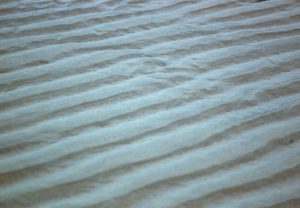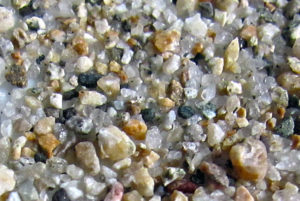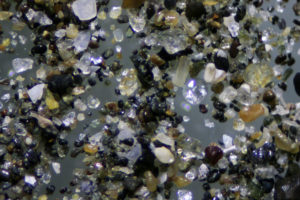There is a whole sector of microscopists who enjoy collecting and examining sand. Under the scope sand becomes a multi-coloured array of tiny mineral crystals. These naturalists pick up small amounts of sand everywhere they visit – and try to examine and analyze them. Each location probably has a different ‘fingerprint’ with a different composition of rocks and minerals.
Storing Samples
Many collectors use small plastic pill bottles to store the sand. This allows them to observe the sand right through the clear plastic with a hand lens or a dissecting microscope. It also stores the sand in convenient amounts to be studied any time. It’s a good idea to identify the sample with a tag on the inside recording where it was picked up, the date, and any other information. You can use a permanent marker to record on the plastic bottle itself as well.
Under the Microscope
Under the microscope sand looks much different. Its no longer salt and pepper coloured. Some of the particles are tiny crystals – often brightly coloured, mixed in with small fragments of rocks. Together they may just form a grey-looking beach.
With luck you may find fragments of shells or perhaps the remains of whole organisms. These are often found in the layers underneath the surface of the sand. The fragments can be sorted out under a dissecting scope and isolated. Some enthusiasts mount these fragments on cardboard slides for further identification and study. They may represent micro-fossils hundreds or even thousands of years old.
Sand Under a Microscope

In these ripple marks there is a small zone slightly darker than the rest on the sand. Particle size is slightly larger and may contain the tests (shells) of foraminifera and other organisms.

These sand samples are a mix of small mineral crystals and rock particles.

It isn’t necessary to obtain these samples first hand – these were brought home by obliging friends from their holidays. Ask your friends for help assembling a collection.